I do believe in the value of alignment, and thus I have actually spent quite a bit of time thinking about this question. The answer I have settled on is that the question itself is taking you off the path, is derailing the deepening of your practice.
It is simply not a particularly helpful question. To ask if there is such a thing as perfect alignment is to give preference to the destination over the journey. Asking the question itself is redirecting you away from the here and now and towards a pie in the sky.
What matters is not whether or not perfection can be achieved. What matters is whether you can engage in the process of improving each pose, each breath, each movement, each moment. How do we improve a pose? By imbuing it with greater awareness, more serenity, and more spaciousness, freedom, and grace. What matters is whether you can improve the process, without the need to believe that you are on your way towards perfection. What matters is whether you can make each moment more vivid, more serene, more joyful, without needing to believe in the existence of perfection itself. A focus on improving alignment, rather than perfecting it, allows us to do just that.
Perfect alignment is a distraction
When we feel like we have reached perfection, all we have reached is an impasse along the path. In fact, it’s the most powerful impasse of all towards continuing along the path. After all, if we can convince ourselves that we have reached the end of the path, then continuing along it is utterly nonsensical. But enlightenment itself, the supposedly ultimate goal, is in the most essential way NOT the reaching of a goal. Instead, enlightenment is reaching the understanding that there are no goals, that there is just being here now, fully realized, fully embodied.
Tibetan Buddhist meditation teacher Chögyam Trungpa once said, “Enlightenment is the ego’s ultimate disappointment.” Enlightenment is reaching the understanding that the secret lies in the journey itself. Whenever you have come to a greater understanding of the answers to your questions, it is time to ask the questions again, with greater nuance, with greater subtlety. When you do that, your answers will also become more nuanced and more profound each time you go through the process of asking them. Enlightenment is maintaining this process of asking the right questions over and over again, each time coming to a more nuanced, NOT a more definitive answer, and to continue that process indefinitely. Taking time in your yoga practice to explore alignment is one way to keep asking the right questions.
If there is no perfect alignment, then why bother with alignment?
So, if there is no such thing as perfect alignment, should we just throw alignment out of the window? In other words, is there a purpose to a journey without a destination? Of course there is: The journey itself is the purpose. Improving your alignment in THIS moment in time, feeling how subtle changes in your alignment can change the feeling of a pose, is exceedingly worthwhile. It is one way to be on the path, to be engaged in the inquiry that is yoga. How do I feel right now? If I move my spine this way, does that make me feel better because it frees my breath? Is the desire to reach a particular goal causing me suffering in this moment? Can I prioritize a freer breath if I let go of my goals, and does that improve how I feel?
Improving your alignment in this moment in time is an excellent way to become more mindful. Just because there is no perfect alignment, does NOT mean that each version of each pose is equally ‘good’, equally useful. Despite there being no perfect version, coming into a version of a pose that is more intentional, more spacious, and more energetically free, is a worthwhile change. It means not only that you are becoming more mindful, which is necessary to improve your alignment. The increased spaciousness and energetic freedom created by better alignment also facilitates your ability to find serenity and joy in this moment in time.
Can you improve your alignment without thinking about perfect alignment?
Come into a pose in which you feel that good alignment is challenging. Downward Dog, Triangle, Cobra, and Warrior 1 or 2 are all poses I find very useful for this exercise. They are easy enough to be maintained for a while, while offering sizable alignment challenges for most people. Set a spacious, solid foundation for your chosen pose, come into the pose and notice how you feel. Do you feel spacious and free? How hard are you working to get somewhere you are not? Is that effort contributing to your enjoyment of this moment in time, or diminishing it? Are you focusing on where the periphery of your body is (your hands, feet, gaze), and does that cause you to lose awareness of your core, of your breath? Are you comparing where you are in the pose to an idealized image of it you have in your head? Is that comparison with an idea of perfection adding to your experience of the pose, or distracting you from it?
Better alignment means more space
Start playing with the alignment, starting with the alignment of your foundation. Then move on to the alignment of your hips. What does it mean to improve your alignment? How does the movement of your hips affect your sense of joy? From my experience, any adjustment that increases your sense of spaciousness is a beneficial adjustment. One of the general patterns is that moving your hips and spine towards more neutral alignment is one way to increase spaciousness. This is true for any pose that isn’t an intentional forward bend, side bend, backbend, or spinal twist. How about poses in which we are intentionally changing the shape of the spine (such as in deep forward- or backbends)? In these poses, distributing the movement of the spine along the entire spine (instead of just bending the segments that require the least effort) maximizes spaciousness, and also reduces the chance of injury.
Forcing alignment through excessive effort doesn’t work
However, if such an otherwise beneficial adjustment requires a tremendous amount of effort, and/or creates too much intensity, then moving your hips and spine that far is NOT beneficial, because it won’t actually increase your sense of spaciousness, nor free the flow of energy in your body. Thus if you find that you can’t adjust your hips or spine to increase spaciousness without creating too much intensity, then you first need to back out of the pose to reduce intensity. For example, in Triangle move your bottom hand higher, and in Downward Dog lift your armpits away from the floor. THEN move your hips and spine into a more neutral, more spacious shape.
Reducing the intensity allows you to feel more spacious. This is so because it allows you to move towards more neutral alignment without creating too much intensity. If you are loathe to make an adjustment that feels like “backing out of the pose”, ask yourself how goal-oriented you are. Then notice that creating more neutral alignment brings back the intensity that you temporarily lost by “backing out” of the pose. Part of the lesson here is that intensity with spaciousness feels much more pleasant than intensity without spaciousness, and thus aids the cultivation of serenity.
Notice how you feel
Subtly change the position of your hips and spine. Notice how those changes in your core alignment ripple out into your whole body. Notice how those changes make you FEEL, not whether some teacher has told you that this adjustment is correct, and that one is incorrect. Really FEEL the effects of each adjustment, both in terms of the intensity of the pose, but at the same time in terms of the sense of spaciousness and freedom you experience in the pose. Notice how your sense of spaciousness may be in conflict with your sense of accomplishment. We tend to measure accomplishment by how far we can reach with our periphery. Sadly, we can always reach farther if we compromise the shape of the spine, if we compromise our breath. In fact, that’s how we all move, all day long, when we are not moving mindfully.
Also notice that an increase in spaciousness and freedom is generally accompanied by an increase in stretch intensity. That is so because when you make an adjustment that increases spaciousness, you generally are able to do so only when you stop avoiding stretching the parts of your body that you always avoid stretching. In general, we avoid stretching the hips (and to a lesser degree, the shoulders). We compensate for this lack of movement in the hip- (and shoulder-) joints by increasing the movement along the spine. We either over-round or over-arch the spine, or we do both, along different segments of the spine, depending on the pose.
Serenity is related to a spacious breath
However, our sense of spaciousness is largely dependent on the shape of the spine. The closer to neutral the shape of the spine, the more spacious we feel, and the easier it is to maintain a sense of serenity in each pose. That is because our sense of serenity is challenged when we cannot breathe. Moving towards a more neutral spine always frees the breath.
When you start exploring the alignment in a pose, you are moving away from the path of least resistance. You are leaving the rut in the road that has been formed by your habits of imbalance. You stop avoiding the work of yoga. That only happens when you are really immersed in the moment. It happens when you are truly feeling what each moment brings, rather than feeling frustrated that you haven’t achieved the “perfect” version of the pose yet. Or worse, feeling smug because you think you have achieved perfect alignment and you can turn on the auto-pilot because there is no more work to be done. :)
Which Downward Dog?
PS: Which of the three versions of Downward Dog shown here is more spacious, more balanced, more free? Most people will have no problem agreeing on the same pose without needing to analyze the photos in detail. The more spacious pose is the first one, the one with a more neutral spine. Not only is it more spacious, but it is also more joyful, and more serene. This is the case because it supports a more spacious breath. Interestingly, this version also happens to be more challenging than either of the other two.
This is worth emphasizing: The neutral spine version is more enjoyable even though it is more challenging.
However, it is NOT the one that is most gratifying to the ego. The neutral spine version is more challenging because you are not simply accepting what is (like in the second photo), but also are not reaching for a goal (Photo 3: Must…Get…The…Head…To…The…Floor!). It compels you to prioritize this moment in time, and to focus on making it more enjoyable. It is neither complacently accepting a suboptimal here and now, nor is it striving for transformation into (perceived) perfection. Instead, you are moving ever deeper into spaciousness, which takes you ever deeper into the moment, and deeper into serenity. Better alignment is real, and powerful. Resignation is a lost opportunity for mindfulness. Looking for perfection is just a distraction from the here and now.
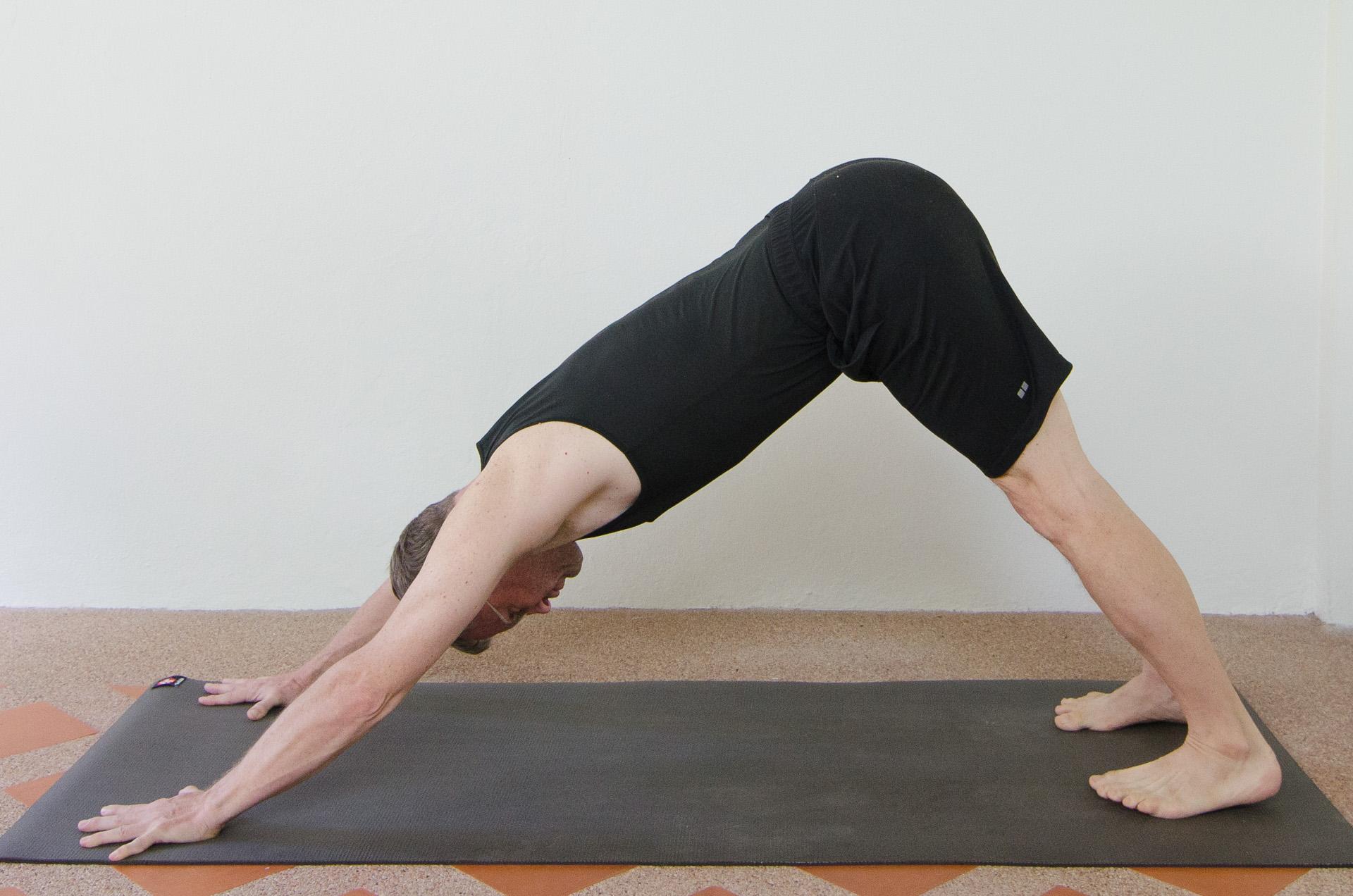
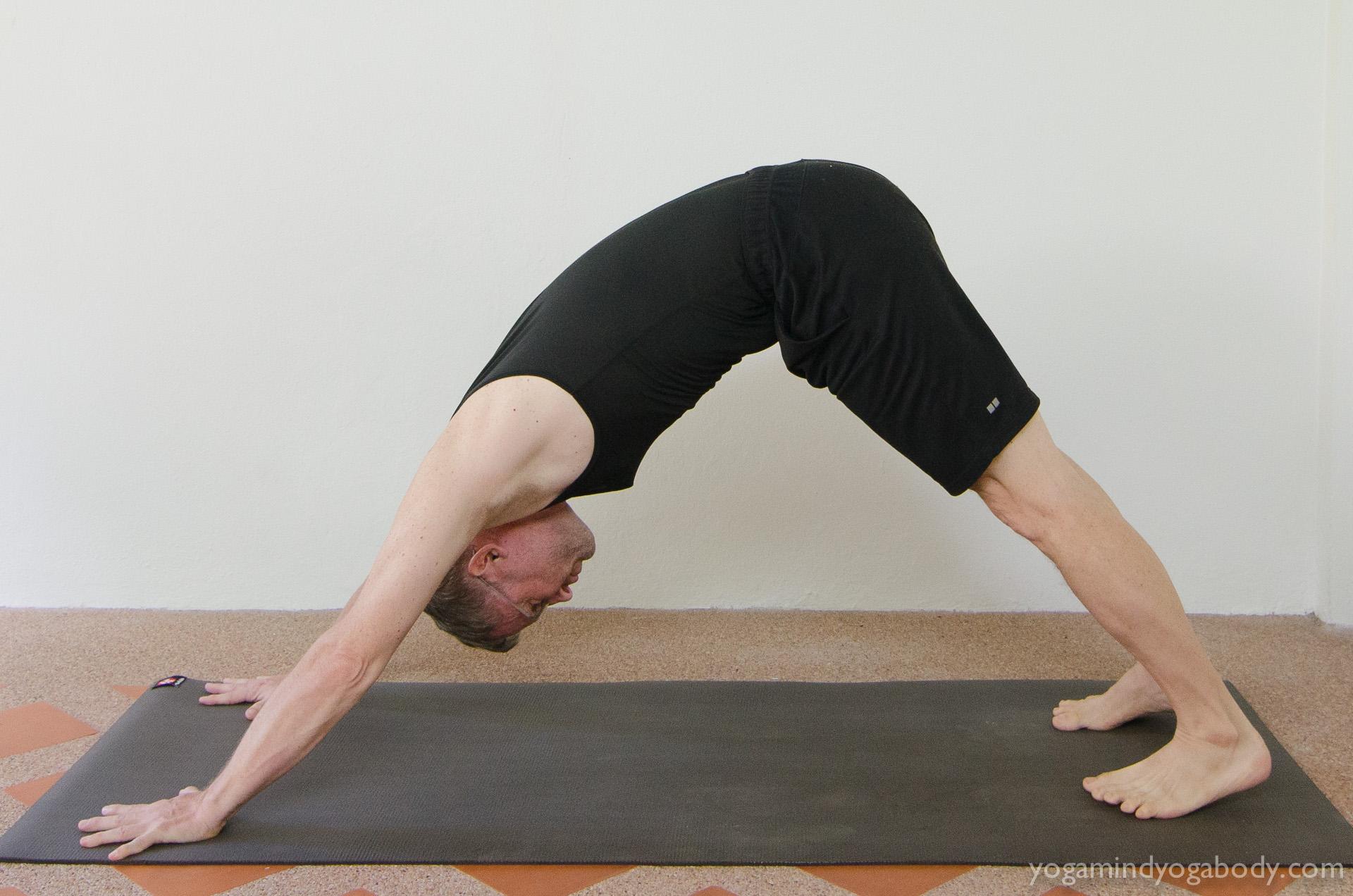
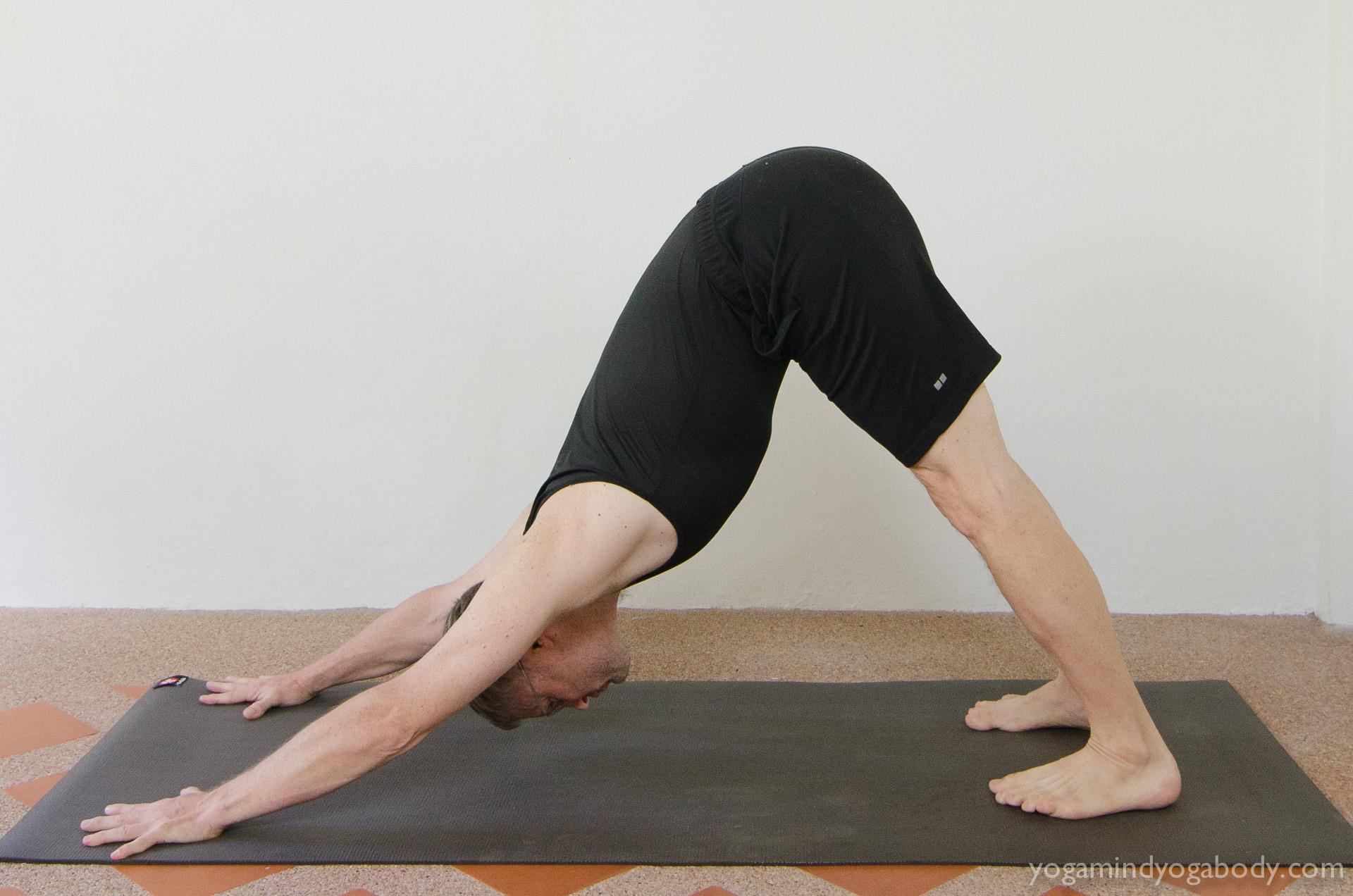
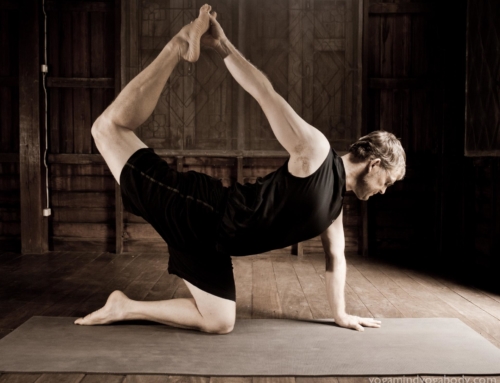
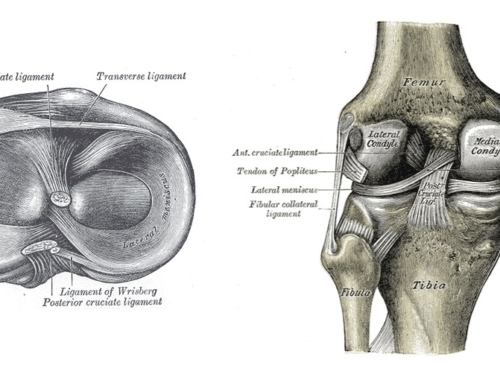
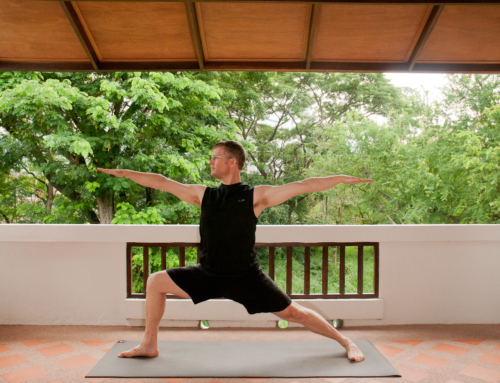
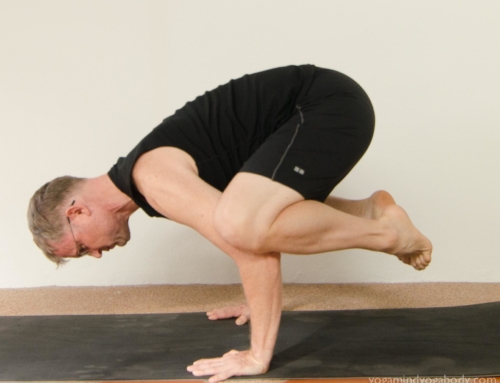
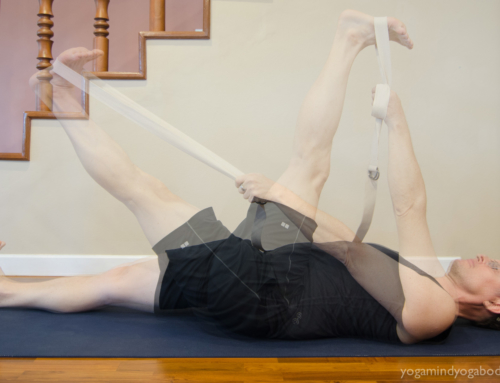
Leave A Comment